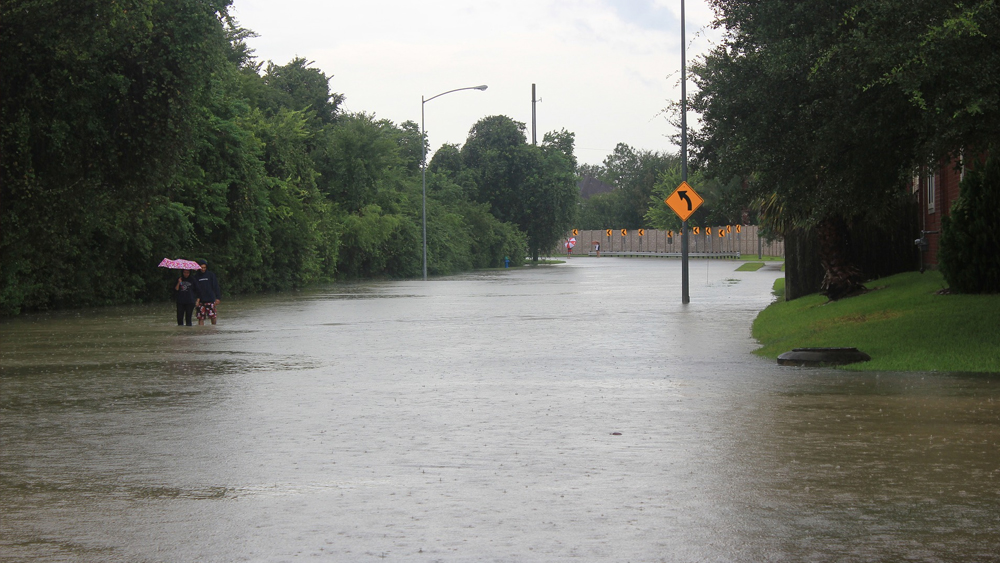
Dr. Arnold Vedlitz, Dr. Bryce Hannibal, and Ms. Carol Goldsmith of the Institute for Science, Technology and Public Policy (ISTPP) are partnering with other Texas A&M researchers to identify and examine how the dynamics of planning, policies, flood control infrastructures, and the social networks in which these efforts operate affect the capacity of urban communities to quickly recover from major flooding. The National Science Foundation’s (NSF) Critical Resilient Interdependent Infrastructure Systems and Processes (CRISP) program has awarded a $2 million grant to support this research, which will focus on Harris County, Texas, and the flooding caused by Hurricane Harvey.
Dr. Vedlitz, co-principal investigator on the project and professor and holder of the Bob Bullock Chair in Government and Public Policy at the Bush School of Government and Public Service, will lead the ISTPP research team in an in-depth examination of planning and decision-making processes and the social network interactions that occur across the local and regional stakeholder groups involved in these efforts. As Dr. Vedlitz points out, “These interactions affect both the planning for and response to natural disasters. The effectiveness of these interactions create the planning, physical infrastructure, and resource networks for responding to disasters, which in turn, affect the quality of actual responses once a disaster occurs.” The team’s goal is to model how inter-organizational dynamics and decision-making processes in human systems affect the management of interdependent flood protection, emergency response, and transportation infrastructure systems.
Using data collected from a series of surveys of key stakeholders, Dr. Hannibal, ISTPP assistant research scientist, will develop comprehensive maps of the social network structure of the stakeholder groups. The team will analyze the structure of these networks, identifying core clusters of groups that have frequent communications and which of these clusters are connected to other clusters. “And by analyzing the time series of network maps,” Dr. Hannibal explains, “we’ll be able to identify events and practices that encourage the integration of these networks and their hazard mitigation plans, along with circumstances that tend to lead to conflicting plans or gaps in the plans.”
Ms. Goldsmith, senior research associate and assistant director of the Institute, will lead the administration of grant activities for the Institute. She will coordinate development and implementation of the surveys and provide general research support to the lead investigators.
Insights gained from the project will be shared with a broad spectrum of planners, policy makers, community organizations, and other relevant groups to help them make evidence-based decisions to improve the resilience of their communities.
Dr. Ali Mostafavi of TEES and the Zachry Department of Civil Engineering is the lead principal investigator of the project. Other co-principal investigators on the team include Dr. Phillip Berke, professor in the department of Landscape Architecture and Urban Planning and director of the Institute for Sustainable Communities; Dr. Sierra Woodruff, assistant professor in the Department of Landscape Architecture and Urban Planning; and Dr. Bjorn Birgisson, professor in the Department of Civil Engineering.

